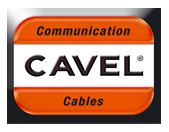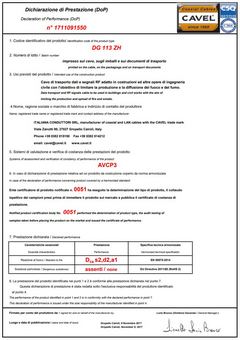DER EUROPÄISCHEN BAUPRODUKTENVERORDNUNG
An introduction to CPR
(the Construction Product Directive EU 305/11)
1. What’s the CPR
The management of CPR firstly has the noble aim to minimize the risks to people and property by reducing the danger of fires. It is the Construction Product Directive that has been applied in all member states of the European Community since July 2013. It concerns the "new era" of power, control and communication cables, both in copper and optical fiber, to be installed in construction works subject to fire requirements of reaction performance. The Directive EU 305/2011 is a Regulation introducing a common technical language and shared evaluation methods that define uniform Euro-Classes, related to cables performance in case of fire.
2. Who must respect the CPR
The CPR EU Regulation affects distributors, integrators, manufacturers, architects, contractors, engineers or anyone involved in European buildings and the materials used in their construction which must comply with CPR requirements. By us as manufacturer, the process that we have to carry out includes the following commitments:
- - Declaring the performance of cables with respect to their Reaction to Fire and publishing their relevant DoP (Declaration of Performance) assuming our responsibility for their conformity.
- - Creating and implementing a certification system (AVCP) for the continuous surveillance of the cables.
- - Pointing out the CE marking and the due information on cables’ jackets as well as on labels accompanying each single cable length supplied.
- - Maintaining for 10 years the relevant supporting documentation.
3. How the Regulation is implemented
The conformity of the products with the Regulations is:
- - standardized by Spec. EN 50575 in fire reaction requirements, test methods and cable evaluation;
- - guaranteed by the DoP (Declaration of Performance) that every manufacturer must issue to the user and by the placement of CE marking on the products;
- - specified by each Member State in the declination of Euro-classes according to the applications;
- - implemented by designers, builders and users in the selection of appropriate products to be used in specific projects.
4. Characteristics of cables subject to CPR
To meet the requirements of: safety in the event of fire, hygiene, health and the environment, the cables used in construction works must guarantee an adequate reaction to fire and a given release of dangerous substances. In fact, the safety of buildings in case of fire is implemented through:
- - the limitation in the generation and propagation of fire and smoke,
- - allowing the occupants the opportunity to leave the buildings in safe and good time
- - as well as to guarantee a high level of safety to rescue teams.
The Euro-Classification criteria, are expressed in a synthetic codification, which scans the characteristics of the cables according to the following parameters:
- - Fire propagation classes, such as: B2ca, Cca, Dca, Ea, Fca;
- - the opacity of the fumes produced, which varies in the parameters: from s1 to s3;
- - the dripping of the incandescent particles that can propagate the fire, which varies: from d0 to d2;
- - the acidity of the fumes, defining the danger to people and the corrosiveness for things and varies: from a 1 to a3
In principle, the Euro-Classes adopted in Europe are those shown in the table below. Since each member State is given the faculty to classify and determinate the places where cables are installed according to their reaction to the fire, a more in-depth verification of the appropriate national documents is suggested, case by case.
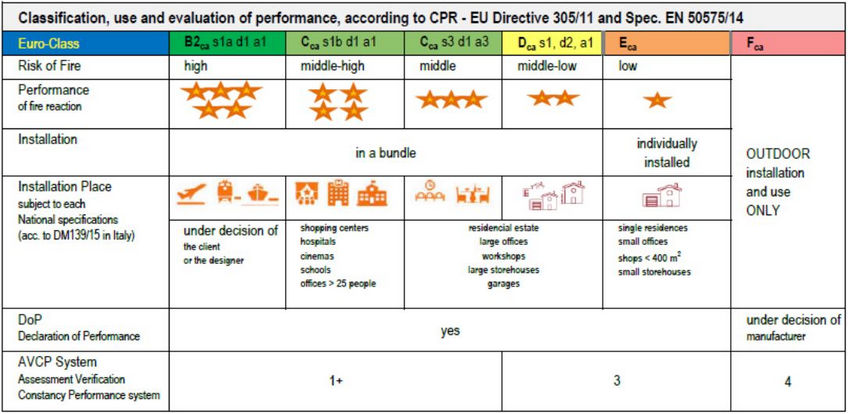
5. Certification Body and Fire Reaction Report
The Product Classification process starts with the choice of a Notified Body. These institutions are accredited to the European Commission as a Notified Body and they are included in the NANDO (New Approach Notified and Designated Organizational Information System).
These institutions are public and the website of NANDO allows to find their identity through their identification number; here the appropriate links:
- - introduction to the NANDO system
http://ec.europa.eu/growth/tools-databases/nando/index.cfm
- - the Product Family: Power, Control and Communication Cables
http://ec.europa.eu/growth/tools-databases/nando/index.cfm?fuseaction=directive.notifiedbody&sort=%20country&dir_id=33&sel_fml_id=142861
The cables provided to the Notified Body are submitted to the relevant tests and in case of positive feedback they issue the “Reaction to fire classification report for electric cable”.6. The DoP and the updating of Technical Data Sheet
Supported by the positive feedback of the tests and the release of the Classification Report, we are in turn authorized to draw up the corresponding DoP - Declaration of Performance, by which we assume the responsibility to declare the fire reaction Class. See the example below.This document is public and it may be required at our company at any time. For service to anyone who needs it, this document is already available on the corporate website as well. It's easy to trace it by surfing into our web site up to the download links, as follows:
-
 the Data Sheet of each specific cable
the Data Sheet of each specific cable -
7. CE marking and cable labelling
Conforming to instructions of CEI EN 50575 standards we apply to any single cable’s packing unit one so called CE label, whose example is shown on left below. On the contrary, the label shown on right below appears on any outer cardboard box or wooden drum, where the Production Lot is also clearly visible.
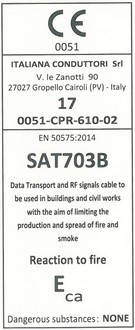
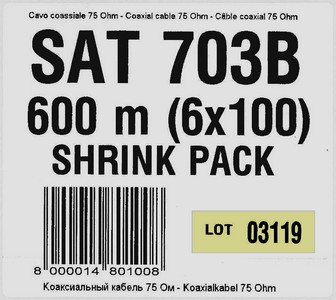
8. Lot of production and its usefulness
In accordance with the implementation of a Factory Production Control (FPC), as set out in the CEI EN 50575: 6.3 Specification, the manufacturer must establish a system for traceability and marking of any individual batch of product so that it will be identifiable and traceable according to its production origin. The relevant documentation has to be kept by the manufacturer for a period of 10 years.
This allows, when deemed necessary by the user or the intermediary, to ask the manufacturer for details about the features of the supplied cable, simply providing the following details: cable code and lot number. Achieving this purpose the cable code and production lot number are always present on all cable sheaths as well as the standard and CE labels. In future a single label is being built that integrates the two current ones and we will announce it in due time.
9. CPR statements on cable’s jacket
Together with the Euro-Class indication the Production Lot is also printed on the cable’s outer jacket, whose code: dddyy(n) provides the following data:
- - ddd means the day of production (001-365)
- - yy the year of production
- - (n) the possible progressive number, if any.
